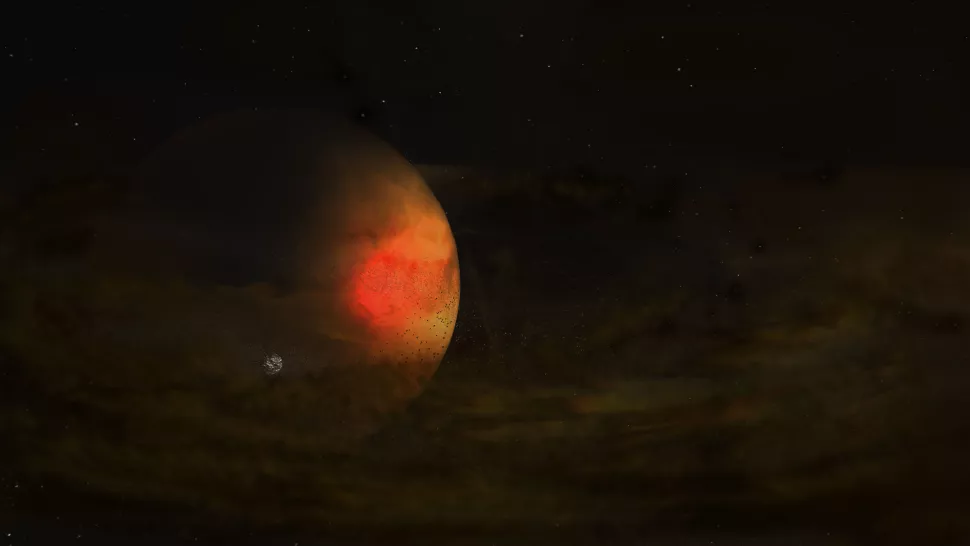
New planets are born out of huge disks of gas and dust around a star. These particles collide and coalesce over millions of years, forming larger and larger objects like a snowball rolling downhill until a spherical planetary-size object eventually takes shape. During this hatchling phase, the young planet will have enough gravity to form its own disk, a circumplanetary disk.
Now, astronomers have captured this very scenery in action nearly 395 light-years away from Earth in the constellation Ophiuchus.
Using the formidable Atacama Large Millimeter/submillimeter Array (ALMA), an array of 66 massive antennas in Chile, an international team of astronomers peered through the disk of the exoplanet in question, which surrounds a fledging gas giant in a star system known as AS 209. To everyone’s delight, they detected gas for the first time in a circumplanetary disk, which is likely helping seed the formation of new moons around the Jupiter-sized alien planet as we speak.
The first circumplanetary disk around an exoplanet was discovered only in 2019 by the same team of ALMA scientists while observing young exoplanet PDS 70c.

Detecting and studying these kinds of disks is huge for astronomers because it can help us shed light on how our own solar system formed. Earth’s moon didn’t form from a circumplanetary disk, but rather from the clumps of a giant impact between early Earth and a Mars-sized object billions of years ago. Jupiter’s Galilean moons, however, may have very well formed through the same accretion process as now witnessed at AS 209.
“The best way to study planet formation is to observe planets while they’re forming. We are living in a very exciting time when this happens thanks to powerful telescopes,” lead author Jaehan Bae, a professor of astronomy at the University of Florida, said in a statement.
Astronomers estimate the age of the host star at just 1.6 million years. Compared to the Sun’s venerable age of 4.6 billion years, AS 209 is just a baby, and its exoplanets are just slightly younger. In fact, this would make it probably the youngest exoplanet ever discovered thus far.
The gas-rich planet-forging circumplanetary disk isn’t the only baffling thing about this novel study. The developing planet is 19 billion miles away from its host star, which is exceedingly far away. Neptune, the farthest planet from the Sun, not counting the dwarf-planet Pluto, is 2.8 billion miles away, for comparison.
This whopping distance stretches the imagination of what scientists thought about how planets are formed. The consensus is that giant, Jupiter-sized planets cannot form this far away from their host stars. This idea now needs rethinking.
Perhaps the size of the debris disk that forged Earth and the other major planets in the solar system was actually much wider than thought, more like AS 209’s. Some astronomers claim there’s a hidden planet, called Planet 9, lurking in the outer region of the solar system. Nothing else seems to explain certain gravitational anomalies observed thus far, although this supposed Planet 9 has so far escaped astronomers’ watchful eyes.
If true, this hypothetical planet would be around ten times the size of Earth, but it should be so far away that it’d take some 10,000 to 20,000 years to orbit the Sun. For comparison, it takes Neptune only 165 years to make the same trip.









